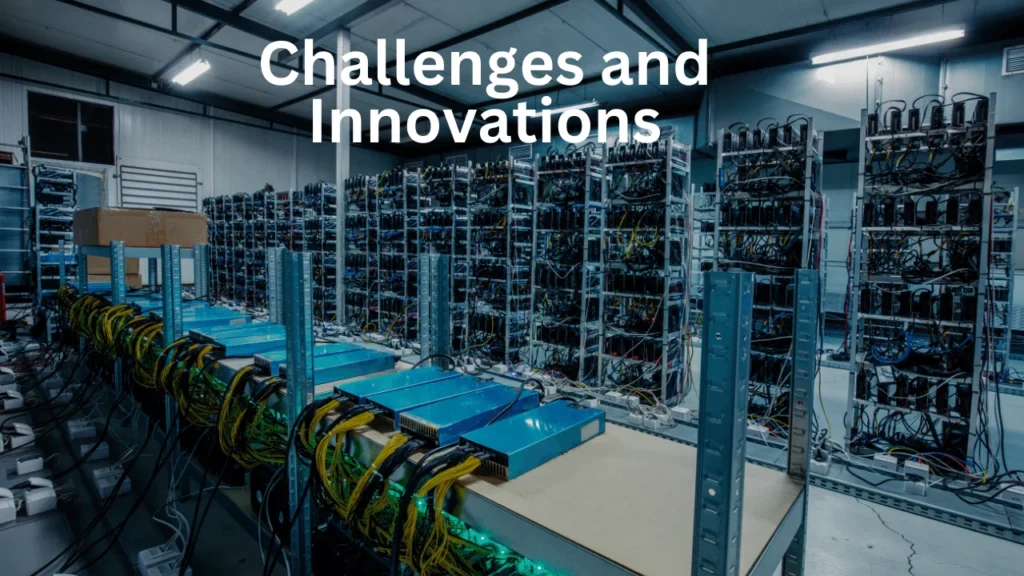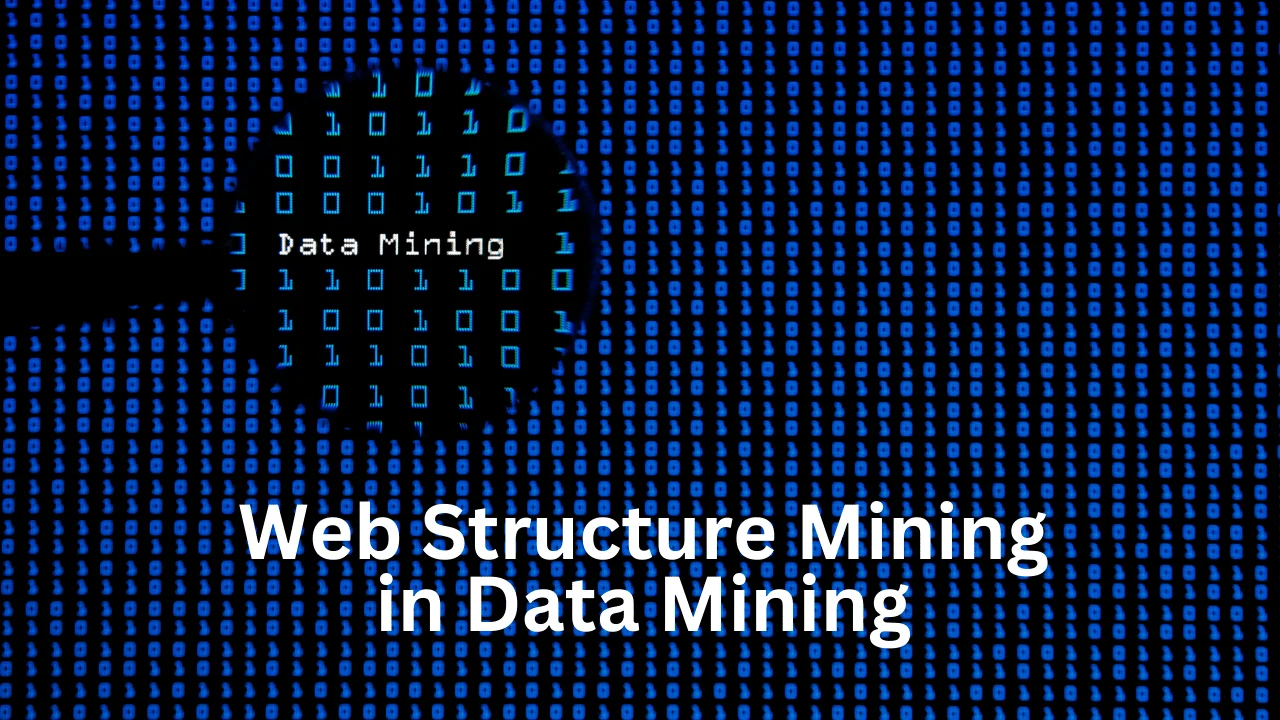An integral part of Web Structure Mining in Data Mining makes use of the extensive web of links to discover previously unknown information and patterns on the Internet. This subfield of data mining is concerned with classifying websites and drawing connections between them by examining the complex web topology. Web structure mining determines the relative importance and authority of websites by using sophisticated algorithms to analyze their link structures and extract structural summaries. Improving the relevance and accuracy of search results relies heavily on these kinds of insights, which are essential for making search engine algorithms more effective.
Significance of Web Structure Mining
By analyzing user behavior patterns and suggesting related links, web structure mining aims to improve the user experience on websites. Social network analysis relies on it to map and quantify community relationship dynamics, among other important uses. This method is priceless in the e-commerce world for studying and improving the layout of online marketplaces to increase user engagement and happiness. Thus, web structure mining is an essential data mining tool that provides researchers and businesses with deep insights into web data.
Techniques and Applications

Web Link Structure Analysis
The goal of web link structure analysis is to deduce the interconnections between various web pages by inspecting the structure of links within those pages. Link popularity is a measure of a page’s authority and importance that miners use to their advantage. Search engine optimization algorithms, which rank websites, frequently make use of this strategy.
Hyperlink Analysis in Data Mining
Examining the connections between web pages, both within and between domains, is the primary goal of hyperlink analysis. Search engine results page (SERP) rankings are affected by the quality and relevance of the web pages, which can be understood through this analysis. In order to comprehend web page authority and implement SEO tactics, it is an essential component.
Web Page Categorization through Links
This method sorts websites according to preexisting themes or subjects by analyzing their link structures. Web structure mining tools are incredibly helpful for organizing and retrieving information from websites because they group web pages into clusters based on shared content or function by analyzing the nature and context of links.
Authority and Hub Analysis
One way to find the most authoritative websites and sources within a specific domain is to use authority and hub analysis. A hub page connects to numerous authoritative pages, while an authoritative page offers valuable content and is frequently linked by other pages. Having a good grasp of these factors can greatly impact search engine optimization and online marketing approaches.
Structural Pattern Recognition in Web Data
The goal of structural pattern recognition is to extract meaningful information from web structures by spotting and analyzing recurring patterns. Improvements to website design and functionality can be informed by identifying common web templates or frameworks.
Challenges and Innovations

Overcoming Data Complexity and Volume
Web structure mining faces a significant challenge in dealing with the enormous amount and complexity of web data. Thanks to developments in data processing and storage like cloud computing and distributed databases, it is now feasible to store and analyze massive datasets with greater efficiency.
Ensuring Privacy and Security
Preserving privacy and security is of the utmost importance when it comes to web structure mining, since it frequently handles sensitive user data. Protecting user privacy and preventing data breaches is becoming more and more dependent on techniques like data anonymization and secure data storage practices.
Advancements in Algorithmic Approaches
Improving the efficiency and accuracy of web structure mining requires the development of more complex algorithms. This area shows a lot of promise for machine learning models that can learn and get better with time.
Integration with Other Data Mining Techniques
A more complete picture of web data and user behavior can be obtained by combining web structure mining with other data mining techniques like content mining and usage mining. Better decisions and deeper understanding can result from this multidisciplinary approach.
Ethical Considerations in Mining Practices
When it comes to web structure mining, ethical considerations are still important. To guarantee the responsible use of the techniques without violating individual rights, it is essential to establish clear criteria and standards for ethical mining practices.
Applications of Web Structure Mining in Various Domains
E-commerce Website Structure Optimization
In order to boost conversion rates and user experience, web structure mining is applied in the e-commerce industry to improve site architecture and navigation paths. To improve user experience and drive traffic to high-conversion areas like checkout or special offers, e-commerce companies can examine structural patterns and link organization. This helps them create more intuitive navigation.
Social Network Link Analysis
An essential function of web structure mining in social networks is the analysis of user connections for the purpose of understanding community dynamics and patterns of influence. Critical for targeted marketing and the dissemination of viral content, it aids in identifying important influencers, the dissemination of information, and the structure of social interactions.
Improvement of Search Engine Algorithms
Web structure mining helps search engines improve their algorithms, which in turn boosts the rankings of authoritative and relevant pages. Search engines can gain a better grasp of page quality and relevance by analyzing the web’s link structure. This, in turn, improves the quality of search results and makes users happier.
User Behavior Prediction with Web Structure
Web structure mining is a method for predicting user behavior that evaluates link structures and navigation patterns to anticipate what users will do next. This has the potential to greatly improve targeted advertising, personalized content delivery, and site usability, leading to more engaging and user-friendly websites.
Future Trends in Web Structure Mining
Integration with Artificial Intelligence and Machine Learning
The incorporation of AI and ML technologies into web structure mining is crucial to its future success. These developments improve the efficacy and efficiency of web structure analyses by enabling more complex pattern recognition, predictive analytics, and automated decision-making procedures.
Advancements in Real-Time Data Processing
Web structure mining’s ability to report on web dynamics in real time is going to grow in tandem with the development of real-time data processing tools. For real-time user behavior tracking or anomaly detection in networks, this will be an absolute must-have application.
Increased Focus on Semantic Web Mining
The field of semantic web mining, which integrates data semantic analysis with web structure mining, is anticipated to experience substantial growth. With this method, we can learn more about the context of the content, which leads to better classification and link predictions that are based on meaning instead of merely data structure.
Ethical Web Mining Practices
There will be a shift toward more moral approaches to web structure mining as worries about personal information security and privacy mount. To guarantee responsible handling of user data, this involves being transparent about data collection and use and implementing privacy-preserving techniques.
Development of Customized Web Mining Tools
It is expected that there will be an increase in demand for web mining tools that can be customized to meet the specific needs of different industries or types of data. More relevant and actionable insights will be provided by these tools due to their specialized functionalities, which are optimized for particular tasks or sectors like healthcare, finance, or education.
FAQs
What is web structure mining?
Web structure mining is the process of using data mining techniques to extract useful information from the structure of web links, which includes analyzing the topology of the web and understanding the relationship between web pages.
How does web structure mining enhance user experience?
By predicting user behavior and suggesting relevant links or content, web structure mining improves website navigation and personalizes user interactions, leading to a more satisfying and efficient online experience.
Can web structure mining improve SEO?
Yes, by understanding and optimizing the link structures and architectural layout of websites, web structure mining can significantly improve a site’s SEO, enhancing its visibility and ranking on search engines.
What are the challenges in web structure mining?
Challenges include handling the vast amount of web data, ensuring data privacy and security, and managing the complexity of web structures.
How is web structure mining applied in e-commerce?
Web structure mining helps e-commerce sites optimize their structure for better user navigation and experience, directly influencing purchasing decisions and improving conversion rates.
Also check: Partition Algorithms in Data Mining
Conclusion
With its vast potential for better web navigation, online marketing, and search engine performance, web structure mining in data mining is a significant advancement. The methods and tools for web structure mining are developing in tandem with the expansion of the internet, which bodes well for the prospect of future breakthroughs in this field.

Brandy Stewart, an enchanting wordsmith and seasoned blogger, weaves compelling narratives that transport readers to uncharted territories. Infused with perceptive viewpoints and dynamic storytelling, Doris exhibits a command of language that enthralls both hearts and minds, leaving a lasting mark on the literary panorama.

